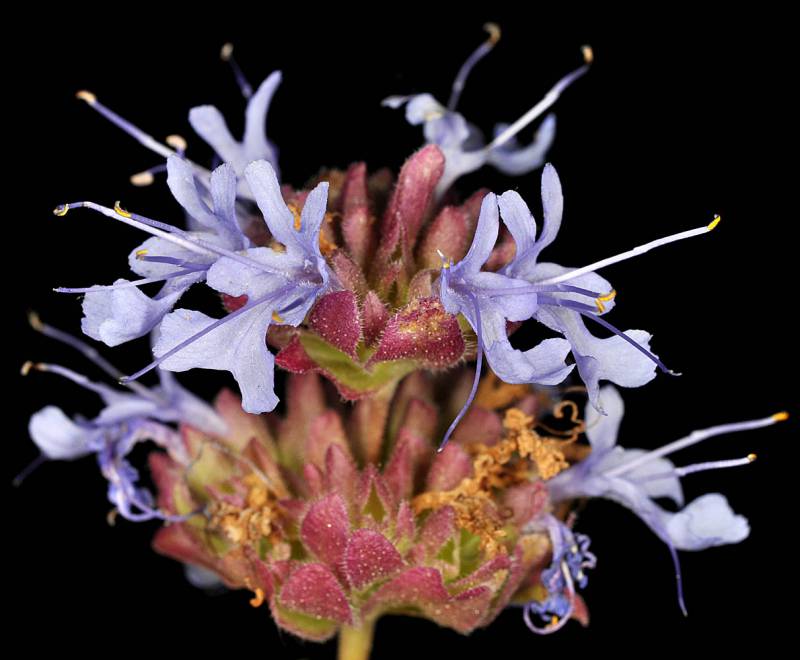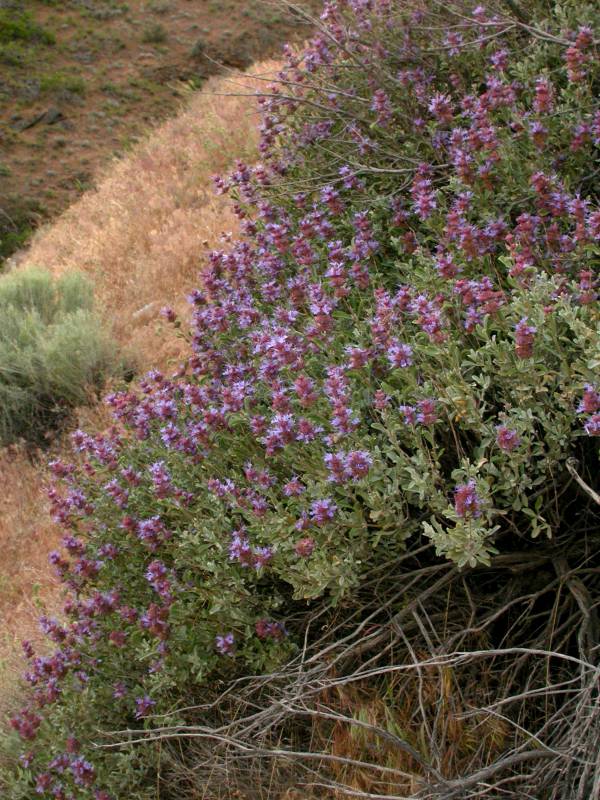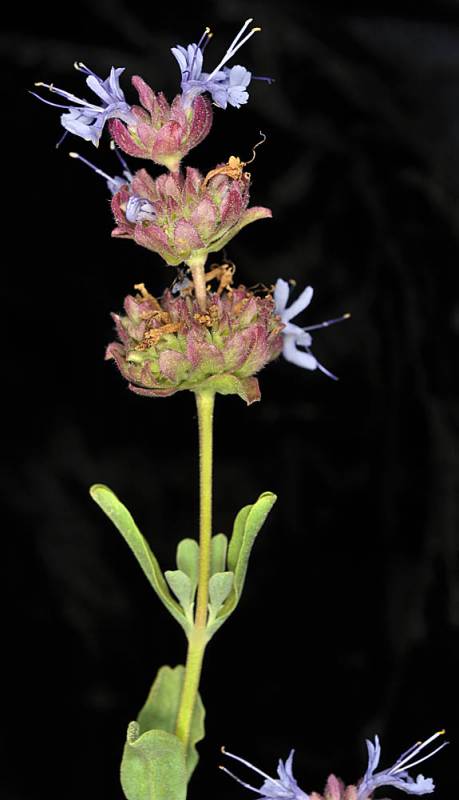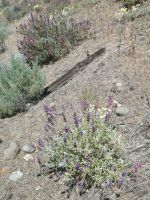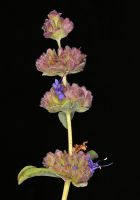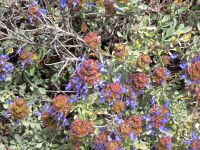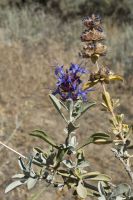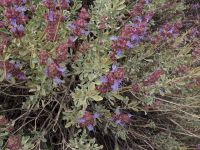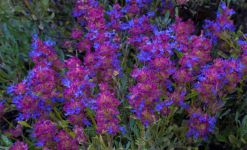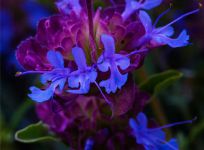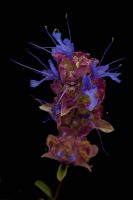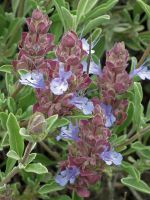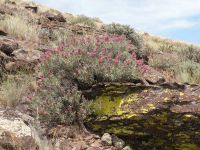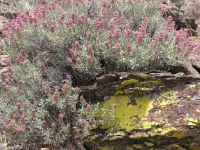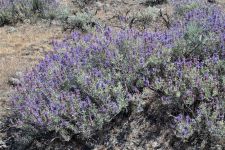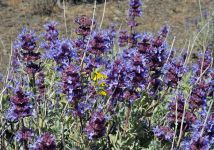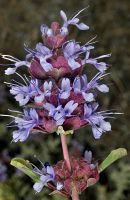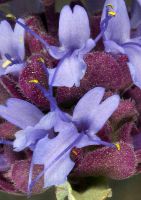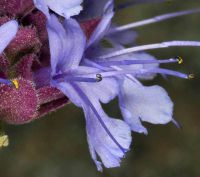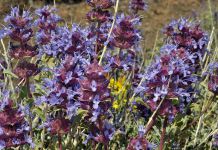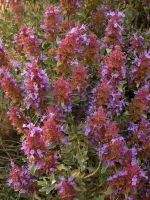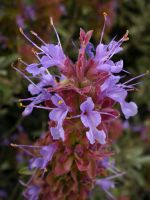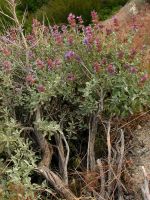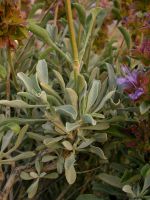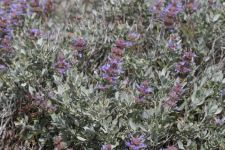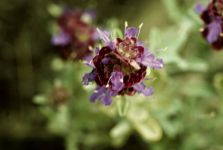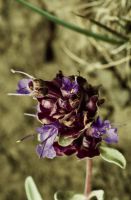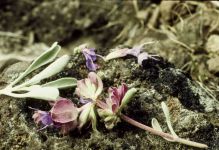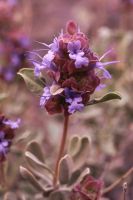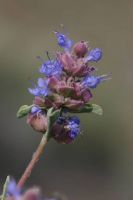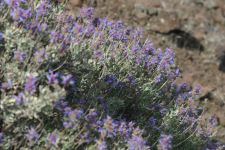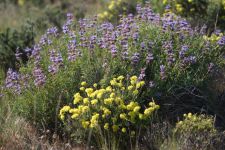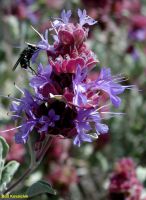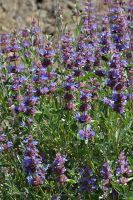Distribution: Occurring east of the Cascades crest in Washington; Washington to California, east to Utah and Arizona.
Habitat: Dry, open, often sandy or rocky areas in sagebrush plains and foothills.
Flowers: May-July
Origin: Native
Growth Duration: Perennial
Conservation Status: Not of concern
Pollination: Bees, flies, hummingbirds
Much-branched shrubs, often broader than high, the rigid branches 2-5 dm. tall.
Leaves opposite, numerous, often in bundles, silvery with a close, mealy pubescence, the blade oblanceolate to elliptic, 1.5-3 cm. long and 4-15 mm. wide, narrowed to a short petiole.
Flowers in a series of dense, bracteate verticels at the ends of many of the branches; bracts broadly elliptic to obovate, purplish, 7-12 mm. long, dry, granular on the back; calyx two-lipped; corolla usually bright blue-violet, I cm. long, two-lipped, the spreading, 3-lobed lower lip much longer than the short, flat, 2-lobed upper lip; stamens 2, long-exerted; style narrow, long, 2-parted; ovary 2-celled, superior.
Nutlets 4
Publication: Ill. Fl. Pacific States 3: 639. 1951.
-
var. incana – fleshy sage, gray-ball sage
 Occurring east of the Cascades crest in Washington; eastern Washington to eastern Oregon, east to southwestern Idaho.
Occurring east of the Cascades crest in Washington; eastern Washington to eastern Oregon, east to southwestern Idaho.
PNW Herbaria: Specimen records of Salvia dorrii in the Consortium of Pacific Northwest Herbaria database.
WA Flora Checklist: Salvia dorrii checklist entry.
OregonFlora: Salvia dorrii information.
E-Flora BC: Salvia dorrii atlas page.
CalPhotos: Salvia dorrii photos.
USDA Plants: Salvia dorrii information.

